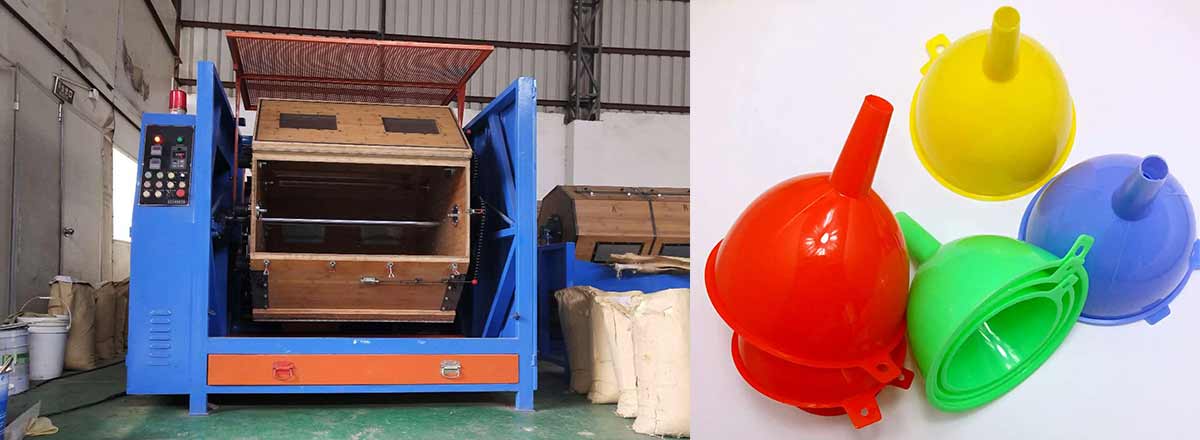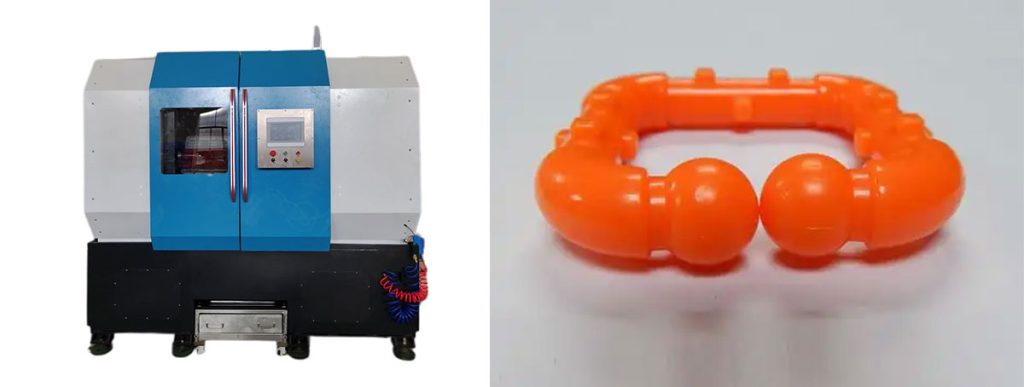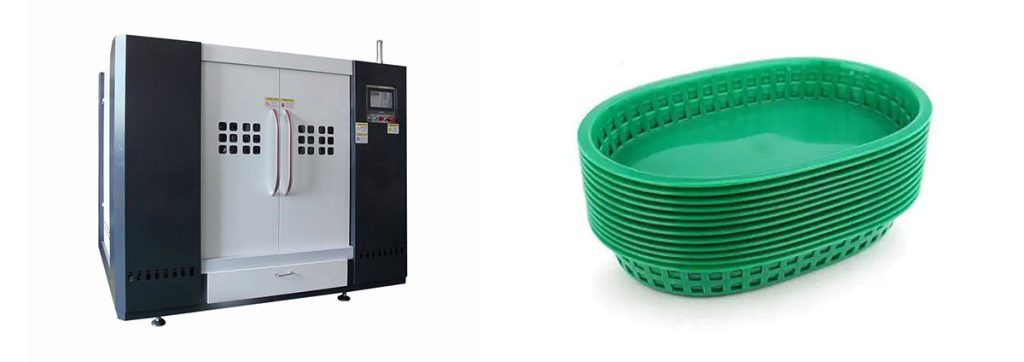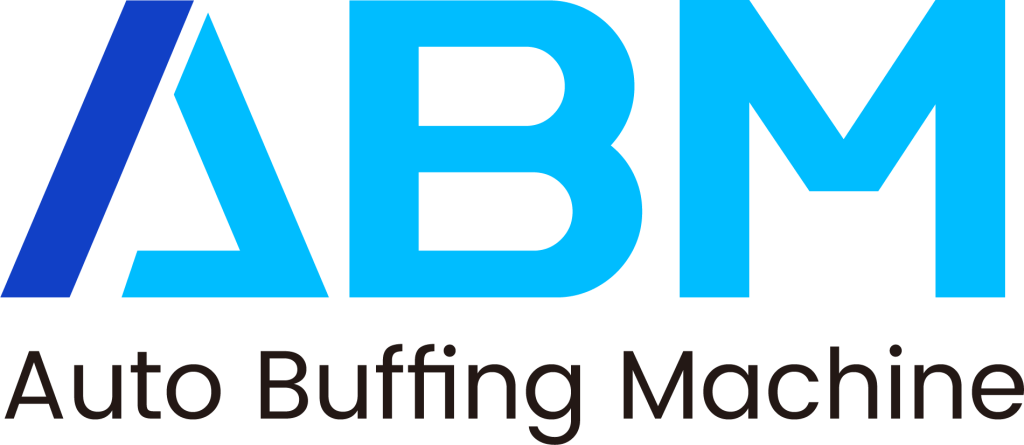

Integrating a plastic polishing service into production lines transforms manufacturing processes by ensuring efficiency and precision. This practice has fueled market growth, with the global plastic polishing machine market valued at approximately USD 1.2 billion in 2023 and projected to reach USD 2.5 billion by 2032. Polished plastic components exhibit improved aesthetics, enhanced durability, and better dimensional consistency. These benefits lead to higher-quality products and streamlined operations, which are vital for industries relying on precise and attractive plastic parts. Implementing standardized polishing parameters and real-time monitoring further ensures consistent results across production batches.
Key Takeaways
- Using plastic polishing service improves production and makes products better.
- Shiny plastic parts look nicer, last longer, and stay the same. They are important for industries like cars and healthcare.
- Following set polishing steps and using plastic polishing machine gives steady results. This lowers mistakes and makes work faster.
- Buying good tools and materials helps make smooth finishes and saves money over time.
- Keeping workers safe and using eco-friendly methods protects people and nature. It also helps businesses earn more.
Understanding Plastic Polishing Service
Benefits for Plastic Manufacturing
Plastic polishing service plays a pivotal role in enhancing the efficiency and quality of plastic manufacturing. By refining the surface of plastic components, manufacturers achieve high-quality results that meet industry standards. Polished surfaces not only improve the aesthetic appeal but also enhance the durability and functionality of the final product. This process reduces surface roughness, ensuring better consistency across production batches.
The growing demand for polished plastic components has driven significant market growth. According to industry reports, the global market size for plastic polishing service is projected to reach $5.79 billion by 2024, with an expected growth to $7.91 billion by 2034. This growth is fueled by the increasing need for high-quality finishes, automation, and sustainable practices.
| Aspect | Details |
|---|---|
| Market Size (2024) | $5.79 Billion |
| Expected Growth (2025-2034) | $5.97 to $7.91 Billion |
| CAGR | Approximately 3.17% |
| Key Drivers | Demand for high-quality finishes, automation, sustainability focus |
Applications Across Industries
Plastic polishing methods find applications across a wide range of industries. In the automotive sector, polished plastic components contribute to sleek designs and enhanced durability. The electronics industry relies on polished surfaces for precision and gloss in device casings. Medical equipment manufacturers use polishing to meet stringent hygiene and quality standards. Additionally, the aerospace and consumer goods sectors benefit from the improved aesthetics and functionality of polished plastic parts.
These applications highlight the versatility of plastic polishing services in streamlining operations and meeting diverse industry needs. By ensuring consistency and high-quality results, polishing has become an indispensable part of modern manufacturing.
How to Polish Plastic for Enhanced Durability?
Polishing plastic involves several techniques aimed at achieving smooth, durable surfaces. Mechanical methods, such as buffing and sanding, remove imperfections and prepare the surface for finer polishing. Chemical polishing processes use solvents to dissolve surface irregularities, creating a uniform finish. Plastic polishing machine automates these processes, ensuring precision and reducing manual effort.
The effectiveness of these techniques can be measured by surface roughness levels. For instance, achieving an A0 standard results in a surface roughness of 0.008 micrometers, which significantly enhances durability and gloss. The chart below illustrates the differences in surface roughness across various standards:
By selecting the right polishing methods and tools, manufacturers can polish plastic components to meet specific durability and quality requirements. This ensures products not only look appealing but also perform reliably in their intended applications.
Methods and Technologies in Polishing
Mechanical Polishing Techniques
Mechanical polishing techniques rely on physical processes to refine the surface of plastic components. These methods include buffing, sanding, and grinding, which remove imperfections and achieve smooth finishes. Buffing uses rotating wheels with abrasive compounds to polish plastic surfaces, while sanding employs sandpaper or abrasive pads to eliminate roughness. Grinding, often used for larger components, ensures uniformity by removing excess material.
Mechanical polishing offers operational efficiency and versatility across industries. For example, bonnet polishing has been studied extensively for its effectiveness in manufacturing complex shapes. A 2014 study by Zeng and Blunt investigated process parameters for bonnet polishing cobalt chrome alloys, highlighting its ability to optimize material removal rates. Another study evaluated its application in producing hip prostheses, demonstrating its potential for streamlining operations in medical manufacturing.
| Study Title | Authors | Year | Findings |
|---|---|---|---|
| Experimental investigation and analytical modelling of the effects of process parameters on material removal rate for bonnet polishing of cobalt chrome alloy | Zeng S, Blunt L | 2014 | Investigated the impact of process parameters on material removal rates in polishing cobalt chrome alloys. |
| An investigation of the viability of bonnet polishing as a possible method to manufacture hip prostheses with multi-radius femoral heads | Zeng S, Blunt L, Racasan R | 2014 | Evaluated bonnet polishing for manufacturing complex hip prostheses, demonstrating its potential effectiveness. |
These findings underscore the importance of mechanical polishing techniques in achieving high-quality results and maintaining consistency in production.
Chemical Polishing Processes
Chemical polishing processes utilize chemical reactions to refine surfaces and enhance gloss. These methods dissolve surface irregularities, creating uniform finishes without mechanical intervention. Common techniques include chemical mechanical polishing (CMP) and electrochemical mechanical polishing (ECMP). CMP combines chemical reactions with mechanical abrasion, while ECMP applies anodic potential to substrates for improved results.
Research has demonstrated the efficiency of chemical polishing methods in plastic manufacturing. Yongguang Wang’s study on aluminum CMP revealed how different environments, such as water and hydrogen peroxide, influence material removal rates. The study established a mathematical model to explain atomic-scale removal mechanisms, showcasing the precision of chemical polishing. Similarly, Lei and Luo demonstrated the effectiveness of spherical SiO2 in polishing hard disks, highlighting its potential for enhancing surface treatment techniques. Another study compared ECMP to traditional CMP, showing reduced surface roughness and improved gloss.
Chemical polishing processes offer significant advantages in achieving high-quality results, particularly for applications requiring stringent standards and operational efficiency.
Automated Solutions with Plastic Polishing Machine

Plastic polishing machine revolutionizes production by combining precision and speed. The machine streamlines operations, reduce manual effort, and ensure consistency across batches. Equipped with advanced features, the machine caters to diverse polishing needs in industries such as automotive, electronics, and medical manufacturing.
Technical specifications highlight the capabilities of these machines. For instance, a typical automated polishing machine features a spindle speed of 9000r/min, a cutting depth of up to 2mm, and a cutting speed of 2000mm/min. Its work area accommodates components up to 100mm×2500mm, ensuring versatility for various applications. The table below outlines key specifications:
| Feature | Specification |
|---|---|
| Machine size | 3200mm×1100mm×1700mm |
| Work area | 100mm×2500mm |
| Spindle speed | 9000r/min |
| Cutting angle | 0~60° |
| Cutting depth | 0~2mm |
| Cutting speed | 0~2000mm/min |
| Net weight | 3500Kg |
| Machine power | ≤3KW |
| Power supply | 380V 10A |
User testimonials emphasize the reliability and efficiency of automated solutions. Manufacturers report improved consistency and reduced production times, making these machines indispensable for achieving high-quality results.
Plastic polishing machine represents a significant advancement in plastic polishing service, enabling manufacturers to meet industry standards while optimizing operational efficiency.
Selecting Tools and Consumables
Choosing Abrasives and Polishing Wheels
Selecting the right abrasives and polishing wheels is crucial for achieving high-quality results in plastic polishing. Abrasives come in various grades, each suited for specific stages of the process. Coarse sandpaper effectively removes scratches and imperfections, while finer grades refine the surface for a smoother finish. Polishing wheels, often paired with abrasive compounds, enhance the gloss and consistency of the final product.
Different polishing methods require specific tools. For instance, flame polishing uses a hot flame to create a transparent finish, ideal for flat surfaces. Vapor polishing employs chemical vapor to smooth surfaces, but it demands careful handling to prevent damage. These tools not only improve the quality of the polished plastic but also streamline operations by reducing the need for repeated processes.
High-quality consumables ensure accuracy and reliability during polishing. They also prevent damage to expensive equipment, such as polishing machines, and reduce long-term costs by minimizing repairs and repeated tests. Investing in the right tools and materials is essential for maintaining production standards and achieving consistent results.
Role of Fixtures and Jigs in Precision
Fixtures and jigs play a vital role in ensuring precision during plastic polishing. These tools stabilize components, allowing for uniform polishing across all surfaces. By standardizing the process, they help achieve repeatable outcomes and reduce errors, which is critical for maintaining consistency in production.
In automated manufacturing, fixtures and jigs are indispensable. They enhance the effectiveness of robotic systems used in polishing, welding, and assembly. Additionally, these tools improve labor safety by minimizing the risk of accidents and damage to workers. Their ability to eliminate waste, such as waiting time and defects, further contributes to streamlining operations and optimizing efficiency.
The use of fixtures and jigs not only enhances the quality of polished components but also aligns with industry standards. Manufacturers relying on these tools can achieve high-quality results while maintaining operational efficiency.
Evaluating Plastic Polishing Machines for Your Needs
Choosing the right plastic polishing machine requires careful evaluation of its features and capabilities. Key factors include spindle speed, cutting depth, and work area dimensions. Machines with adjustable settings offer greater flexibility, catering to diverse polishing requirements across industries.
Plastic polishing machine provides significant advantages. The machine reduces manual effort, ensure consistency, and deliver high-quality results. For example, a machine with a spindle speed of 9000r/min and a cutting speed of 2000mm/min can handle various tasks efficiently. Its ability to accommodate components up to 100mm×2500mm makes it suitable for large-scale production.
Manufacturers should also consider the machine’s power consumption and compatibility with existing systems. Investing in advanced equipment not only enhances the quality of polished plastic but also supports long-term production goals. By selecting the right machine, businesses can meet industry standards and maintain a competitive edge.
Ensuring Quality and Consistency
Standardizing the Polishing Process
Standardizing the polishing process ensures batch consistency and maintains high-quality standards across production lines. Manufacturers achieve this by implementing clear protocols and using calibrated equipment. These measures reduce variability and improve the gloss and durability of polished plastic components.
A standardized process begins with defining specific polishing parameters, such as speed, pressure, and abrasive type. Operators follow these guidelines to ensure uniform results. Automated systems further enhance consistency by eliminating human error. For example, robotic polishing machine executes pre-programmed routines, delivering precise and repeatable outcomes.
Training programs also play a critical role in standardization. Skilled workers understand the importance of adhering to established procedures, which minimizes defects and ensures compliance with industry standards. By combining automation with human expertise, manufacturers create a reliable framework for producing polished plastic components that meet customer expectations.
Monitoring and Inspection Best Practices
Effective monitoring and inspection protocols are essential for maintaining quality in plastic polishing operations. Advanced technologies provide real-time insights into production processes, enabling manufacturers to identify and address issues promptly.
Several methods ensure thorough inspection and monitoring during polishing:
| Inspection Method/Protocol | Description |
|---|---|
| In-process monitoring systems | Utilize advanced data collection and analysis tools for maintaining manufacturing standards. |
| Live production data visualization | Provides real-time insights into production processes. |
| Automated fault detection and classification | Identifies issues automatically to minimize downtime. |
| Tool condition monitoring and wear analysis | Ensures tools are functioning optimally to maintain quality. |
| Statistical process control (SPC) implementation | Monitors and controls production processes to ensure consistency. |
| Dimensional accuracy and surface finish optimization | Employs high-precision tools and systematic checks to achieve desired surface quality. |
| Live quality tracking systems | Monitors reject rates and facilitates quick problem resolution. |
These methods help manufacturers maintain high standards while reducing waste and downtime. For instance, live production data visualization allows operators to monitor polishing progress and make adjustments as needed. Automated fault detection systems identify defects early, preventing costly rework. Statistical process control ensures consistency by analyzing data trends and maintaining optimal conditions.
By integrating these practices, manufacturers enhance the reliability of their operations and deliver polished plastic components that meet stringent quality requirements.
Leveraging Data for Process Optimization
Data-driven approaches transform plastic polishing operations by improving efficiency and consistency. Manufacturers collect and analyze data from various stages of production to identify areas for improvement. This process enables them to refine techniques, reduce waste, and achieve better results.
Real-time data collection plays a pivotal role in optimization. Sensors embedded in polishing machines monitor parameters such as speed, pressure, and temperature. This information helps operators adjust settings to maintain optimal conditions. For example, data on tool wear can prompt timely replacements, ensuring consistent performance.
Predictive analytics further enhance process optimization. By analyzing historical data, manufacturers forecast potential issues and implement preventive measures. This approach reduces downtime and improves batch consistency. Additionally, statistical models identify correlations between polishing parameters and surface quality, enabling manufacturers to fine-tune their processes.
Leveraging data empowers manufacturers to meet industry standards while minimizing costs. It ensures polished plastic components exhibit superior gloss and durability, aligning with customer expectations and market demands.
Safety and Sustainability in Plastic Polishing
Workplace Safety Measures
Ensuring workplace safety during polishing operations is essential for protecting workers and maintaining productivity. Employers must provide personal protective equipment (PPE) such as gloves, goggles, and respirators to shield workers from dust, chemicals, and sharp tools. Proper ventilation systems reduce airborne particles, creating a safer environment. Regular training programs equip employees with the knowledge to handle equipment safely and respond to emergencies effectively.
Implementing ergonomic workstations minimizes physical strain, reducing the risk of repetitive stress injuries. Automated polishing machines further enhance safety by limiting direct human interaction with hazardous tools. Clear signage and safety protocols ensure that workers remain aware of potential risks, fostering a culture of safety in the workplace.
Environmental Compliance in Plastic Manufacturing
Environmental compliance in plastic manufacturing involves adhering to regulations that minimize ecological impact. The Global Plastic Laws Database tracks international legislation, aiding manufacturers in aligning with environmental standards. Over 60 countries have introduced bans and levies on single-use plastics to curb waste. Extended Producer Responsibility (EPR) laws hold manufacturers accountable for the lifecycle impact of their products, encouraging sustainable practices.
| Regulatory Focus | Description |
|---|---|
| Plastic Bans and Levies | Restrictions on single-use plastics to reduce waste and improve management. |
| Extended Producer Responsibility (EPR) | Shifts waste management responsibility to producers. |
| Production Regulations | Caps on virgin plastic production and taxes on virgin resins. |
These measures promote sustainable production and encourage manufacturers to adopt eco-friendly alternatives.
Sustainable Practices in Polishing Operations
Sustainability in polishing operations focuses on reducing waste and conserving resources. Manufacturers can adopt circular practices by reusing abrasives and recycling plastic waste generated during polishing. Energy-efficient polishing machines lower power consumption, contributing to operational efficiency.
Switching to water-based polishing compounds reduces the use of harmful chemicals, minimizing environmental harm. Additionally, manufacturers can implement closed-loop systems to recycle water used in polishing processes. These practices not only align with environmental goals but also reduce costs, making them economically viable.
Tip: Sustainable practices in polishing enhance both environmental responsibility and long-term profitability.
Collaborating with a Polishing Service Provider
Assessing Expertise and Reliability
Selecting a reliable polishing service provider requires evaluating their expertise and track record. Manufacturers should review the provider’s portfolio to assess their experience with similar industries. For example, a provider specializing in automotive polishing may excel in delivering sleek finishes for vehicle components. Certifications and compliance with industry standards further demonstrate their commitment to quality.
Customer testimonials and case studies offer valuable insights into the provider’s reliability. Manufacturers can analyze past projects to understand how the provider handles challenges and meets deadlines. Additionally, conducting site visits allows manufacturers to observe the provider’s facilities and equipment firsthand. This step ensures the provider possesses the necessary resources to meet production demands effectively.
Key Considerations for Outsourcing

Outsourcing plastic polishing services involves several critical factors. Manufacturers should establish clear quality metrics and key performance indicators (KPIs). For instance, tracking defect rates per batch helps identify issues early and implement corrective actions. Rigorous inspections of incoming materials, such as plastic resin, prevent defects from affecting production.
Regular audits ensure compliance with established procedures. Surprise audits, like those conducted by aerospace companies, verify tolerances and maintain consistency. Statistical process control (SPC) techniques monitor process stability, enabling manufacturers to detect deviations promptly. Supplier development programs also enhance outsourcing relationships. Training workshops improve suppliers’ capabilities, fostering collaboration and long-term success.
Combining In-House and External Polishing Services
Balancing in-house and outsourced polishing services optimizes efficiency and flexibility. In-house operations provide control over critical processes, ensuring consistency for high-priority components. Plastic polishing machine streamlines these operations, reducing manual effort and enhancing precision.
Outsourcing complements in-house capabilities by handling large-scale or specialized tasks. Providers equipped with advanced technologies can manage high-volume production efficiently. This approach allows manufacturers to focus on core competencies while leveraging external expertise for complex polishing requirements.
A hybrid model combines the strengths of both approaches. Manufacturers can allocate routine tasks to in-house teams while outsourcing intricate projects to experienced providers. This strategy ensures seamless production workflows and maintains high-quality standards across all components.
Conclusion
Integrating plastic polishing service into production lines significantly enhances efficiency and product quality. This process ensures polished components meet industry standards while improving durability and aesthetics. Selecting the right tools, such as advanced polishing machines, plays a crucial role in achieving consistent results. Adhering to safety and quality standards further strengthens operational reliability.
Manufacturers can take actionable steps to optimize their processes. Upgrading equipment or collaborating with a trusted service provider ensures seamless operations and high-quality outcomes. These measures not only streamline production but also maintain a competitive edge in the market.
